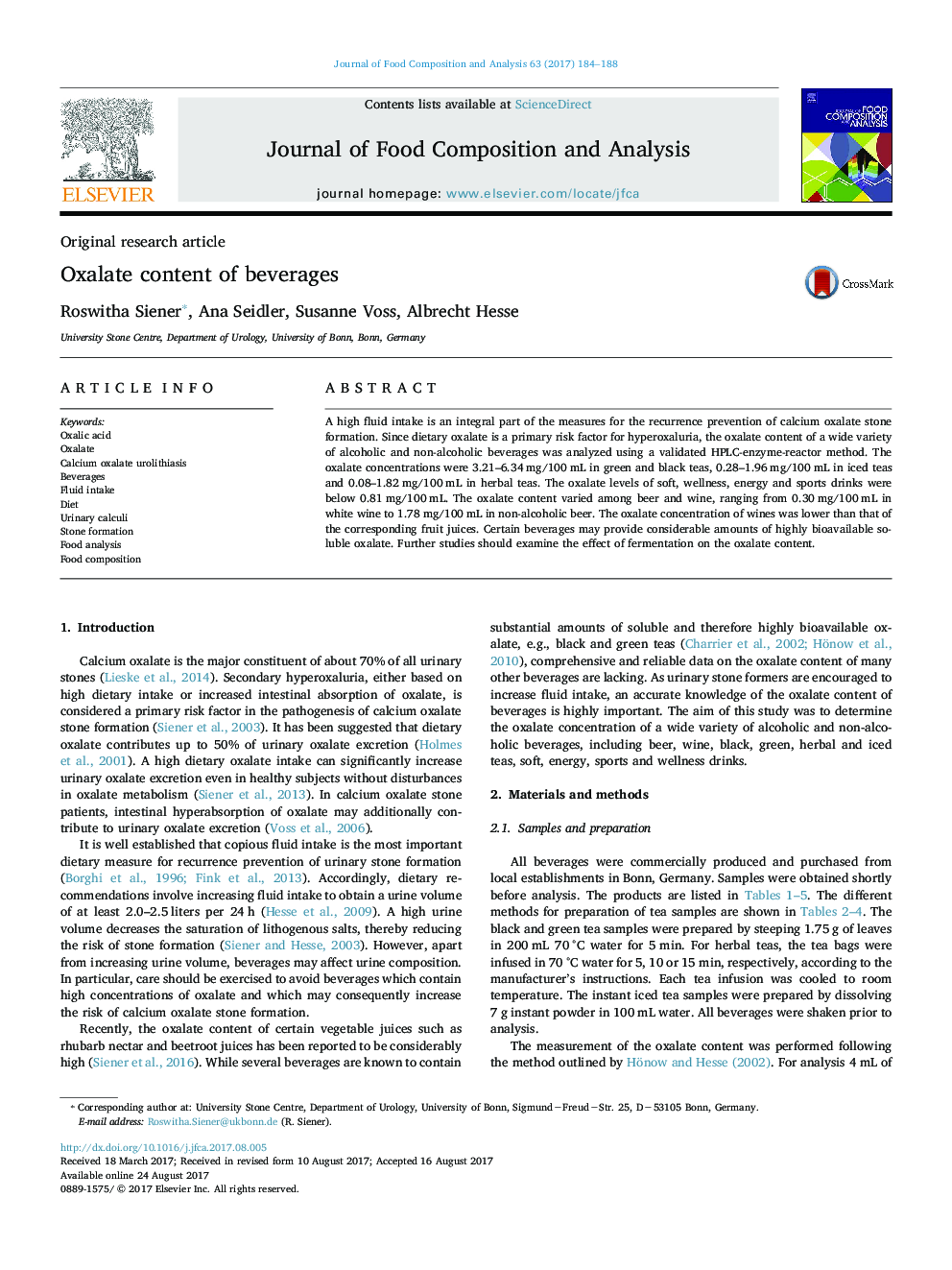| Article ID | Journal | Published Year | Pages | File Type |
|---|---|---|---|---|
| 5136830 | Journal of Food Composition and Analysis | 2017 | 5 Pages |
â¢Oxalate content of a variety of alcoholic and non-alcoholic beverages was analyzed.â¢The highest oxalate concentrations were found in black, green and iced teas.â¢Oxalate content of wines was lower than that of the corresponding fruit juices.â¢Oxalate levels of soft, wellness, energy and sports drinks were low.â¢Certain beverages may provide considerable amounts of highly bioavailable oxalate.
A high fluid intake is an integral part of the measures for the recurrence prevention of calcium oxalate stone formation. Since dietary oxalate is a primary risk factor for hyperoxaluria, the oxalate content of a wide variety of alcoholic and non-alcoholic beverages was analyzed using a validated HPLC-enzyme-reactor method. The oxalate concentrations were 3.21-6.34Â mg/100Â mL in green and black teas, 0.28-1.96Â mg/100Â mL in iced teas and 0.08-1.82Â mg/100Â mL in herbal teas. The oxalate levels of soft, wellness, energy and sports drinks were below 0.81Â mg/100Â mL. The oxalate content varied among beer and wine, ranging from 0.30Â mg/100Â mL in white wine to 1.78Â mg/100Â mL in non-alcoholic beer. The oxalate concentration of wines was lower than that of the corresponding fruit juices. Certain beverages may provide considerable amounts of highly bioavailable soluble oxalate. Further studies should examine the effect of fermentation on the oxalate content.
